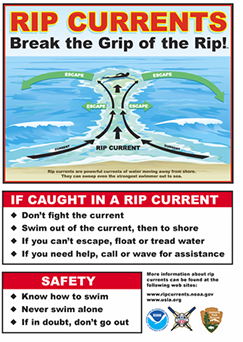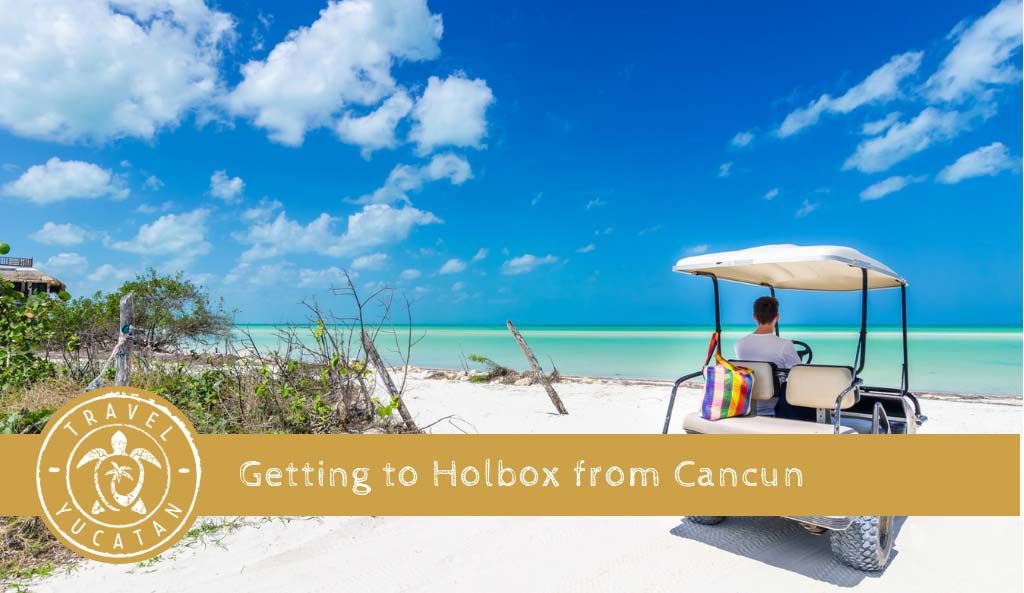SNORKELING AND RIP CURRENTS
I was snorkeling in four feet of water when the rip current hit me!
We were on Isla Grande off the east coast of Panama on the south end of the island where the Atlantic currents swept in. My friend had never snorkeled before and was a bit apprehensive so he decided to sit the first snorkel expedition out and just watch me.
The waves were breaking about a hundred yards [meters] away and were only small ripples by the time they hit shore. I had asked the head maintenance guy at the hotel [a guy from Hawaii who spoke good English] where to snorkel. He said to snorkel right in front of the hotel, so I did.
There was nobody else snorkeling and no lifeguards.
We entered the water, my friend simply wading close to shore while I started snorkeling south parallel to shore towards the ocean. The current was strong and too tiring to swim against so I decided to go back to where we had entered the water and swim out from the island two hundred feet and let the current push me to the North end of the island where I would hit land.
The water was shallow and I immediately hit sea grass. I don’t like swimming in sea grass because you cannot see what is lurking in it so I swam around it and into a little valley that was about fifteen feet deep. There was some reef fish swimming around so I hoped that this would be a good snorkel.
I exited the valley at around 160 feet from shore into an area that was only three to four feet deep when all of a sudden I got sucked feet-first into some kind of super vacuum cleaner.
The power of the current was unbelievable. The waves and all visual indicators of currents were moving northerly yet this current was sucking me southwardly and very fast. I thought to myself; “Oh my God, I’ve been sucked into a Rip Current!”
I started swimming as hard as I could against the current trying to get parallel to it but it was futile. As hard as I could swim I was still being sucked backwards. It is stated on numorous web sites and swimming safety instructions to swim 90 degrees against the current in an attempt to exit it. Yea, right, the person who thought that up obviously has never been stuck in a strong rip current.
A plan was needed to save myself from drowning or getting sucked out into the ocean. What if no boats ever saw me, are there sharks here? Panic set in.
Plan A: Swimming against the current was impossible; energy reserves were falling fast and would fail soon. Breathing through the snorkel at that pace was brutal. If a wave went over my snorkel and water came in then chocking would be another thing to contend with. Maybe relaxing and simply going with the flow was my best option under the circumstances.
Plan B: Maybe I could grab on to a piece of dead coral or volcanic rock and hang on? I reached down and attempted to grab onto something. Yes! I managed to cling on to a piece of dead coral. Now what?
Hoping that my amigo was watching I stuck my head up above the water line. He was not there. There were not that many people on shore and those that were there were not noticing my predicament. There were no boats in the area. How long could I hang on?
Plan C: Picture yourself hanging on a ledge by your finger-tips while a waterfall rushed over you. That’s what it felt like hanging on to that corral. So what I did was tense up my arms from my elbows to my fingers then relaxed the rest of my body. Got my head above the water line and breathed. I knew I could not stay there for long and I had to get my breathing back. This also helped to calm me down and dissipate the panic.
After I regained my composure I stuck my head under water and looked to see if I could somehow “ladder-climb” my way out. One slip or a sharp piece of corral/rock and I would once again be at the mercy of the rip current. Two people died a week before at Los Cabos after getting knocked over by a large wave then sucked out by a rip current.
With nothing to lose I thrust one hand forward and grabbed a rock, held, then moved my other hand forward. Repeating this strategy I slowly followed the coral floor hoping that it would continue until I could manage to get out of the current. The seabed remained shallow and there was enough coral and rock to grab onto in order to pull myself all the way out. We estimated it was around a 200 feet distance.
WHAT I LEARNED FROM THIS ORDEAL
A rip current sometimes produces no visible signs. You have no clue it is there.
It grabs you quickly and moves very fast.
Safety protocols must be implemented when snorkeling anywhere.
ADVICE FOR CASUAL SNORKELERS AND CHILDREN
 All weak swimmers and children should wear a life vest snorkeling under any condition.
All weak swimmers and children should wear a life vest snorkeling under any condition.
Never snorkel where there are no lifeguards. Not only that, make sure someone from your party stays on shore and watches you snorkel. If there is any problem they can help to alert the lifeguard or anybody else around to help quickly [lifeguards might not be paying attention].
Educate every snorkeler in your group what to expect if they get caught in a rip current. It’s not the same as the swells that come with waves on the beach that pull you out a bit. A rip current isn’t the tide pulling you away from shore. It’s more like a super vacuum cleaner that just sucks you in and propels you along a water slide out into the ocean and you have absolutely no control.
Remain calm, stay focused. Reading this you may wonder; “how?” Under the circumstances there is not much more you can do. I was lucky, there was shallow coral for me to grab onto. Most places I have ever snorkeled were nothing like Isla Grande.
By remaining calm you can focus on your breathing and watch to see who is watching you [if you can get your head up].
Let the current take you where it wants to. The worst thing you can do is try and fight it like I did. I thought I could swim out of it but all I did was tire myself out to the point of exhaustion. The advice to swim parallel to the current is false and misleading. If you can swim parallel to the current then you are just in a weak current.
A rip current can suck you out into the ocean. How far; who knows? Once there, other currents can slowly pull you farther out. You are buoyant in salt water and in a much better situation with snorkel gear than a swimmer who got sucked out.
If possible try to swim back to shore. For weak swimmers and children just float and enjoy the adventure. Help will arrive. Drowning is more likely to occur as a result of panic, fatigue and chocking. By remaining calm and conserving your energy, you increase your chances of survival exponentially.
Know that, if you are snorkeling along the coast of any beach resort on the Mayan Riviera that help will arrive for you. Knowing this is reassuring and can reduce the stress of the ordeal.
MY NEW SNORKELING SAFETY PROTOCOLS
If you plan on snorkeling alone and/or in places where there are no lifeguards or even people then the following protocols are ones you may want to consider implementing.
-
-
- Always snorkel with some kind of flotation device [life vest, buoy on a rope, compressed air vest/board].
-
-
- Carry a whistle and waterproof flares.
- If snorkeling with more than one person establish a rule that if one person gets sucked into a rip current and the other person does not; the person who did not should head straight for shore and NOT join the person caught in the current [show your love/courage or whatever by helping to rescue the person and not dying with them].
Before snorkeling an area, know where the nearest boats are in the advent you need to launch a rescue.
SUMMARY
According to the United States Lifesaving Association, sharks typically kill about six people a year globally while every year in the United States alone more than a hundred beach-goers drown in rip currents.
I’ve been snorkeling for years, different countries – oceans and lakes. I’ve never experienced a rip current, never talked to somebody who got caught in one. Never even gave it a second thought. I shudder now to think that I could have been a statistic over something as simple as a snorkel run in four feet of water. What if…






